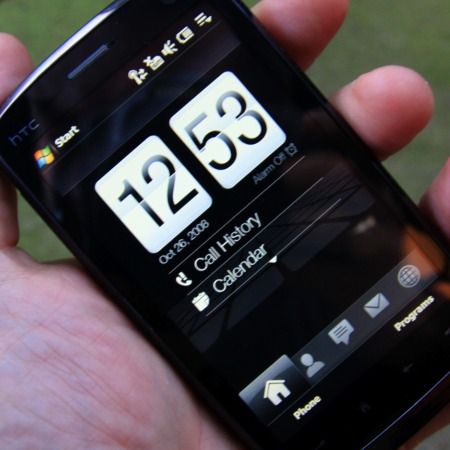The HTC Diamond was an impressive handset, but suffered from one main problem: the screen was a little on the small side. So can the Touch HD change all that with its whopping 3.8-inch screen? We've been playing to find out.
Our quick take
We like the Diamond here at Pocket-lint and this takes all the things that we had concern with (screen size, expandable memory and megapixel count) and fixed them.
The massively enlarged screen now means there is space for your fingers on the screen to navigate around Windows Mobile.
The catch? Well it's large and Orange will probably make the interface unusable after they've played with it. If that's not enough, it's Microsoft Windows Mobile, which you either love or hate.
We can't help feeling though that had Google's OS Android launched on this device complete with on-screen keyboard (yes it really is missing from the G1), T-Mobile would have been struggling to keep them on the shelves. HTC - an Android Touch HD if you please.
It you want a Windows Mobile powered iPhone, this is the closest thing yet.

HTC Touch HD mobile phone - 4.5 / 5
| FOR | AGAINST |
|---|---|
|
|
Big, bloody big, is the best way to describe that screen. Crisp is another word I would use as well. Measuring 115 x 62.8 x 12mm and weighing 146.4 grams this isn't a tiny phone that you can sneakily hide in your pocket. To give you an idea against other handsets the casing is about the same as the iPhone (the HD's screen is bigger though) and compared to something like the BlackBerry Curve it’s about the same thickness and width just a little taller.
However where the iPhone features just the one button, or the Curve about 27, the Touch HD sports four on the front. Ditching the d-pad you get pick up and hang up buttons, a home key and back button. Everything else is expected to be done via that large screen, and why not? It's massive after all.
Elsewhere on the design is a 3.5mm headphones jack (finally) a 5-megapixel camera (over the diamond's 3MP offering) and a microSD card slot so you can expand the memory beyond the 512MB you get built-in. The microSD isn't hot swappable, but it's not buried under the battery either. A quick slide of the case and you're there (seriously when was the last time you hot swapped a microSD card?).
While you won't need it, this being a Windows device, HTC has even found space for a stylus tucked in the side so you can use the (at times) fiddly OS.
On the connection front the Touch HD is a quad-band GSM/GPRS/EDGE device that offers 7.2Mbps HSDPA as well as GPS/AGPS, Bluetooth 2 + EDR and 802.11b/g Wi-Fi letting you get online virtually wherever you are.
Turn it on and you get the HTC interface that's been live since the Diamond launched earlier in the year - it runs Microsoft Windows 6.1. The Home Screen gives you the time in large numbers while scrolling your finger left to right gives you different screens such as the weather or access to email. Perhaps realising the economic crisis the world is in, a Stock page has been added probably so you can see how much money you are loosing.
Overall the interface (we tried a model provided by HTC rather than Orange) is virtually identical to the Diamond, however the additional RAM memory means any lag has virtually gone (it has around 100 more MB - 288 up from 192).
Packed with an accelerometer, the Touch HD auto rotates when it comes to web surfing and viewing pictures, although not when typing emails or text messages. It's a tad annoying but with a number of different on-screen keyboards (2x QWERTY, 1x 20 key, and a 12 key option) you should be able to get around your portrait/landscape typing needs.
If the phone is going up against the iPhone, it has got to do more than email and be "IT Admin dude" friendly. Here HTC has upped the ante on the camera front. Clearly having more room than the Diamond the camera has jumped from a 3- to 5-megapixel offering. Everything is controlled via an onscreen interface - there is no dedicated shutter button - you control that by tapping on the screen and auto-focus can be set automatically or via you pinpointing a position on the screen.
Performance unfortunately is let down by a lack of flash and while the picture quality is okay, it's not going to replace your compact any time soon.
Settings can all be changed as you would expect and yes you do get video recording capabilities and the ability to send MMS. While Bluetooth-ing images to another device is possible, you can't do it from the camera application. You actually have to dip into the Windows Mobile OS (the shock), but at least unlike that device from Apple, you can do it.
To recap
It you want a Windows Mobile powered iPhone, this is the closest thing yet
